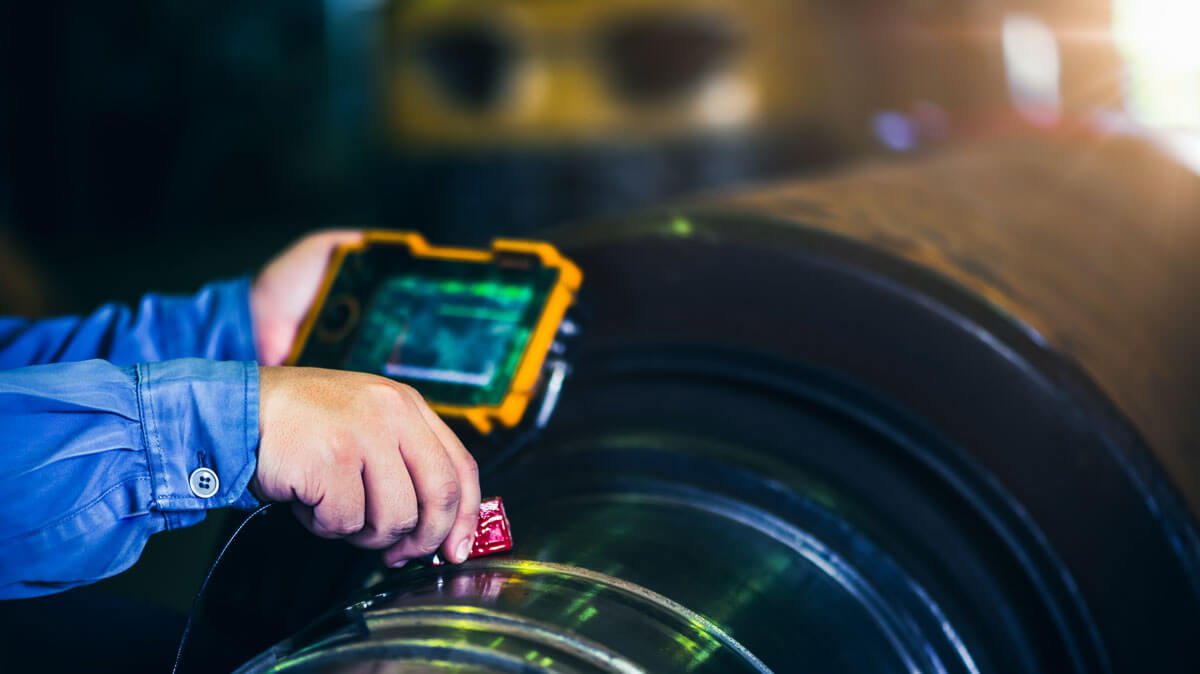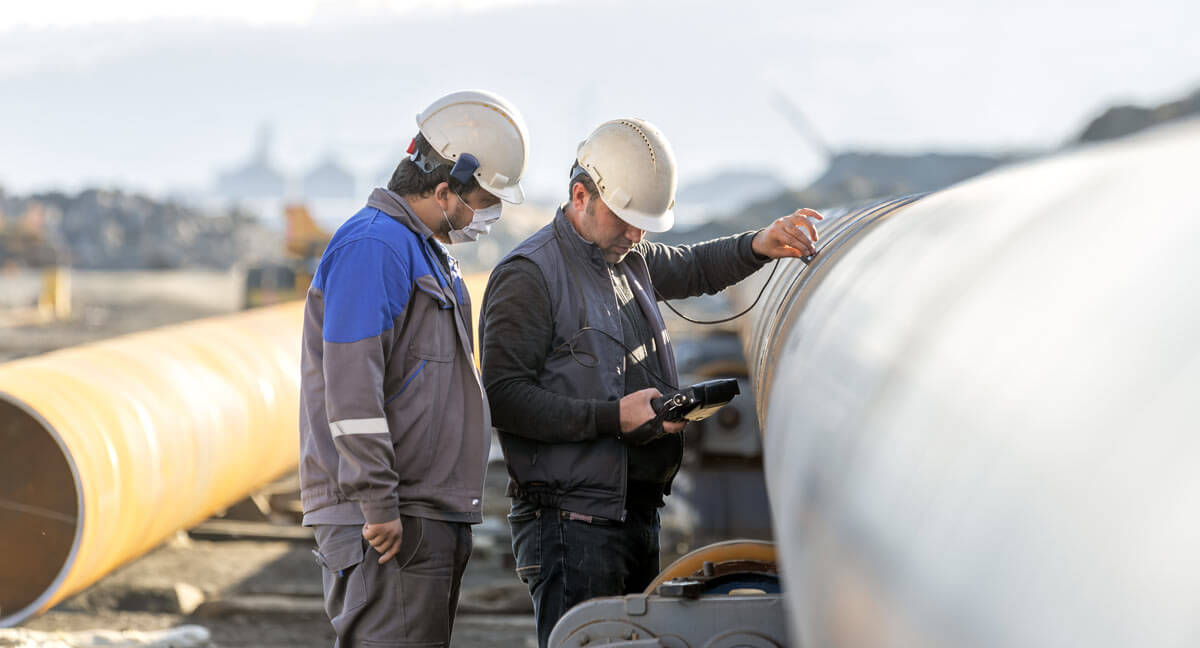Trick Aspects to Take Into Consideration in Welding Inspection for Top Quality Guarantee
Welding evaluation is a vital element of quality control that incorporates various elements vital for guaranteeing the integrity of bonded frameworks. Key considerations consist of the choice of appropriate examination techniques, the certifications of personnel, and adherence to sector standards. The performance of various examination approaches-- such as visual, ultrasonic, and radiographic screening-- can substantially influence the end results of top quality evaluations. Furthermore, durable paperwork techniques are important for keeping traceability and helping with continual enhancement. Nevertheless, the interaction of these components increases better concerns concerning how they can be maximized to boost overall welding high quality.
Kinds Of Welding Processes
Welding procedures encompass a variety of techniques utilized to sign up with products, largely steels, via the application of heat, pressure, or both. One of the most usual kinds of welding processes include arc welding, gas welding, resistance welding, and solid-state welding.
Arc welding, which includes methods like Shielded Metal Arc Welding (SMAW) and Gas Tungsten Arc Welding (GTAW), utilizes an electric arc to produce warm for melting the base steels and filler materials. Gas welding, frequently referred to as oxy-fuel welding, utilizes a flame produced by burning a fuel gas with oxygen to thaw the steels.
Resistance welding, consisting of place and joint welding, depends on the warmth created from electric resistance to bond products, normally used in automobile manufacturing. Solid-state welding processes, such as rubbing welding and ultrasonic welding, sign up with products without melting them, using mechanical pressure and frictional warmth.
Each welding procedure has certain applications, staminas, and limitations, making the selection of the appropriate strategy vital for accomplishing preferred weld quality and performance. Welding Inspection Milwaukee. Recognizing these procedures is vital for making sure effective welding practices and supporting top quality assurance in fabrication and production markets
Inspection Strategies and Tools
To guarantee the honesty and dependability of bonded joints, different inspection strategies and tools are used throughout the welding procedure. These strategies can be extensively classified into non-destructive screening (NDT) and harmful testing (DT) approaches. NDT methods, which do not endanger the integrity of the bonded component, consist of visual assessment, ultrasonic testing, radiographic testing, magnetic fragment screening, and liquid penetrant screening.
Aesthetic examination is one of the most fundamental method, allowing for the instant identification of surface area defects. Ultrasonic screening makes use of high-frequency sound waves to identify interior flaws, while radiographic testing uses X-rays or gamma rays to visualize the interior framework of welds. Magnetic particle screening works for finding surface area and near-surface interruptions in ferromagnetic products, and fluid penetrant testing exposes surface-breaking issues by applying a colored dye or fluorescent penetrant.
On the various other hand, damaging screening includes literally testing the welded joint till failing to analyze its mechanical residential properties. Devices such as tensile testing machines, influence testers, and hardness testers are commonly made use of in this context. By employing a combination of these devices and strategies, assessors can ensure the quality and security of bonded frameworks.

Importance of Documents
In the world of welding assessment, appropriate documentation works as a critical backbone for top quality assurance and regulatory conformity. Paperwork encompasses a large range of documents, consisting of weld procedure specs, evaluation records, see this website and non-destructive screening results. These documents not only give a chronological account of the examination procedure however additionally function as a reference for future examinations and audits.
Accurate paperwork makes certain that all welding tasks are deducible and verifiable, helping with adherence to appropriate sector requirements and codes. It becomes crucial throughout the evaluation procedure, allowing stakeholders to examine conformity with specs and recognize any type of issues or variances. Furthermore, thorough records support efficient interaction among employee and external auditors, promoting a society of openness and liability.
Additionally, well-maintained documents can significantly decrease the danger of expensive rework or failings. By guaranteeing that all necessary information is tape-recorded and easily accessible, companies can simplify their top quality guarantee procedures, inevitably enhancing the integrity of the welded structures. Consequently, investing time and sources into producing robust documentation practices is not simply a step-by-step requirement yet a critical vital for accomplishing lasting success in welding procedures.
Personnel Credentials and Training
Just how can companies make her response sure the proficiency of their welding personnel? To maintain high criteria of quality control, it is essential for organizations to purchase detailed training programs tailored to the particular demands of the welding market. Welding Inspection Milwaukee. This involves not only first training however also continual education to maintain workers abreast of evolving techniques and innovations
Organizations should develop clear criteria for employees credentials, including pertinent accreditations and experience in numerous welding techniques. reference Employing licensed welding examiners (CWIs) can enhance the top quality of evaluations, as these specialists possess the essential experience to make certain and recognize possible problems adherence to ideal practices.
In enhancement to technical abilities, organizations ought to foster a culture of security and conformity among their welding employees. Giving normal workshops and correspondence course can aid reinforce the relevance of security procedures and the implications of non-compliance.
Furthermore, companies need to implement efficiency assessments and responses systems to assess employees competency over time. By methodically attending to training needs and promoting a commitment to high quality, organizations can enhance their welding evaluation processes, eventually causing boosted product honesty and customer complete satisfaction.
Compliance With Sector Standards
Complying with sector standards is vital for guaranteeing the top quality and security of welding procedures. Compliance with well established requirements, such as those set by the American Welding Culture (AWS), American National Requirement Institute (ANSI), and International Organization for Standardization (ISO), offers a framework for analyzing the stability of bonded structures. These requirements encompass numerous facets of welding, including material choice, layout specs, and step-by-step strategies.
Welding inspections should be carried out according to these requirements to validate that the job fulfills the necessary quality criteria. This includes visual examinations, non-destructive testing (NDT), and detailed documents of searchings for. Ensuring compliance not just boosts the integrity of the welds however likewise minimizes risks connected with architectural failings.
In addition, adherence to market standards fosters a society of safety and professionalism and reliability within the workforce. It establishes a criteria for efficiency and motivates continual renovation with normal audits and training. Ultimately, compliance is not simply a regulative requirement; it is a commitment to excellence that shields both personnel and the environment while supplying top quality welding items.

Verdict

Welding assessment is an essential facet of top quality guarantee that includes various aspects crucial for making certain the honesty of welded structures.To make certain the stability and integrity of bonded joints, numerous examination strategies and devices are employed throughout the welding procedure.In the world of welding inspection, appropriate documents serves as a crucial backbone for high quality assurance and regulatory conformity.Welding evaluations need to be carried out in accordance with these criteria to confirm that the work meets the needed high quality standards.In verdict, efficient welding inspection for top quality assurance requires a complex technique that encompasses the choice of appropriate inspection techniques, rigorous adherence to sector criteria, and comprehensive documentation of outcomes.